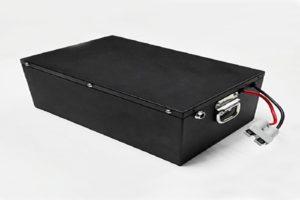
As an industrial mechanic for over a quarter of a century I’ve seen various trades and maintenance transformed through the advent to cordless equipment. They to save time and money and can be utilized almost everywhere. The technology has improved since the beginning of the cordless tool. The higher voltages that have led to greater energy and extended run times for batteries. These tools have be popular with tradesmen.
One of the biggest knocks against cordless devices has been their weight. The typical 18-volt cordless drill weighed at least six pounds. The manufacturers of tools have listened to tradesmen who demand greater power, longer run time and lighter tools. The creation of lithium-ion batteries specifically for the field of cordless tools fulfills the three demands. Custom Lithium Ion Battery Pack Manufacturer can provide a reduction in weight of the battery for cordless use of 25-40% and a total weight that can reach 25 percent.
Advantages Of Lithium-Ion Batteries
It is not a secret that Lithium Ion batteries or Li-ion batteries rank as one of rechargeable batteries. This is why they are found in a wide range of gadgets like cellphones and electric vehicles. As opposed to other types of batteries, these are superior in terms of performance. Here are a few of the main advantages of these batteries. Find out more.
1. Eco-Friendly
The first thing to note is that they don’t have excessive heavy metals that are toxic, in contrast to other kinds like nickel-cadmium or lead-acid batteries. For many years, mercury lead, and cadmium ruled over the battery world however, they weren’t good for the well-being of animals, plants as well as humans. However the Li-ion battery is safe, but they still need being recycled. Don’t simply throw them into your garbage container.
2. Lightweight and Compact
The electrodes that are employed for these battery are light. They are made from lithium and carbon, which is why they are less than standard batteries such as lead-acid ones. For comparison purposes the typical 50Ah Li-ion battery weighs 6 to 7 kilograms in weight. It has twice the capacity of the other batteries. The weight and size of these batteries are fantastic news for people who utilize the batteries in head torchers. This is why these powerful units so easy to transport around.
3. High Energy Density
Because lithium can be a reactive component that has a massive storage capacity, you will utilize fewer units to achieve the equivalent quantity of power. This means that these power units could last for many years to come. The good thing is that they will provide the same level of quality after years of use. The average voltage of a normal cells made of lithium is 3.6V. In contrast the average voltage of the NiMH cell is 1.2V. This means that these cells are large energy density.
4. Low Maintenance
In contrast to nickel-cadmium and nickel-metal hydride kind, Lithium-ion batteries do not have this lazy effect. You can drain them in a fractional way or completely with no worries about their capacity. This is the reason why you aren’t required to completely drain these batteries. You’ll always get every last little bit of energy you can from these batteries.
 5. Higher Number of Charge Cycles
5. Higher Number of Charge Cycles
In terms of lifecycle in mind, the best batteries can last more than 1000 recharge cycles. The typical charge cycle is finished when you continue to use the battery until it has no remaining charge and then charge it back to its full capacity. If you charge the battery while it has only 50% remaining capacity the battery isn’t considered to have completed as a complete charge cycle. More info: www.lithiumbatterychina.com
6. Low Rate of Self-Discharge
Additionally lithium-ion batteries have an extremely low self-discharge rate. Self-discharge is actually an irreparable phenomenon in which the chemical reaction that occurs within the unit diminishes the battery’s capacity when it is in idle. The typical self-discharge rate for these power units is merely five percent over the course of 24 hours. It then falls to just 22% over the course of a month.